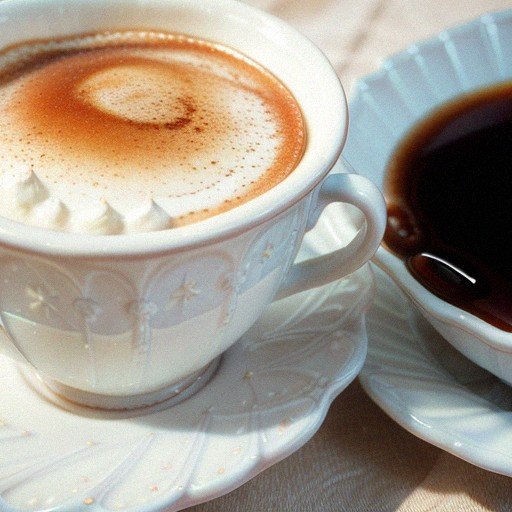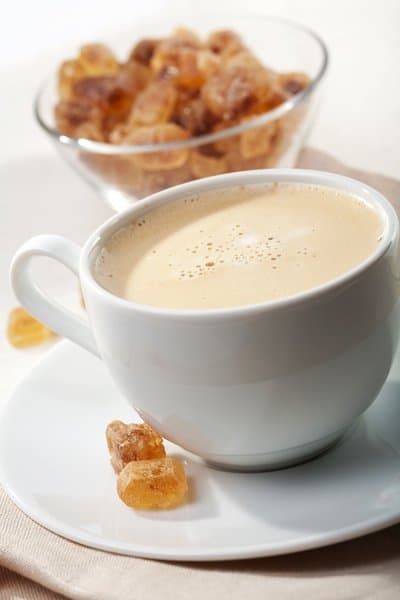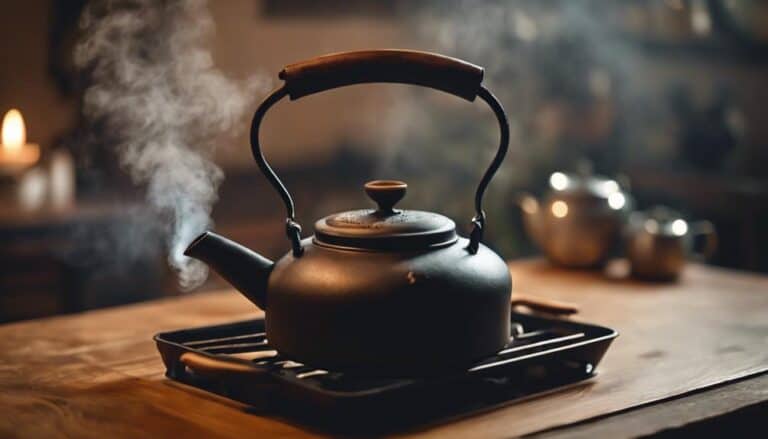The Perfect Balance: Decoding the Art of Cream and Sugar in Coffee

Coffee is undoubtedly one of the most beloved beverages around the world, and its consumption has become a daily ritual for millions. However, for those seeking to enhance their coffee experience, beyond just the basic black brew, mastering the art of adding cream and sugar can truly elevate this caffeinated concoction to new heights.
In this article, we delve deep into understanding the perfect balance between cream and sugar in coffee – a delicate symphony of flavors that requires knowledge, technique, and an appreciation for both science and art. So grab your favorite mug as we embark on a journey to decode this intricate dance between creamy goodness and sweet indulgence in every sip.
The Science Behind Cream and Sugar: Exploring the chemical reactions and interactions that occur when cream and sugar are added to coffee
When cream is added to coffee, a chemical reaction occurs between the casein proteins in the cream and the tannins in the coffee. This reaction helps to neutralize the bitterness of black coffee, resulting in a smoother taste. Additionally, the fat content in cream contributes to a creamy texture.
Sugar also plays a significant role in enhancing the flavor of coffee. When sugar is added, it dissolves into individual molecules that bind with our taste buds’ receptors for sweetness. This interaction stimulates our sense of taste and adds a pleasant sweetness to balance out any acidity or bitterness present in the coffee.
In summary, adding cream and sugar to coffee not only enhances its flavor but also alters its chemical composition by neutralizing bitterness and adding sweetness. These transformations create an enjoyable drinking experience that many people love and fine-tune according to their personal preferences.

The Art of Measuring: Understanding the importance of precise measurements when adding cream and sugar to achieve the perfect balance
Achieving the perfect balance of cream and sugar in your coffee requires careful measurement.
- Consistency is key when it comes to creating a harmonious blend, and precise measurements can help you achieve that desired balance every time.
- Using too much cream or sugar can overpower the natural flavors of the coffee, while using too little may leave your drink tasting bland.
- To ensure accuracy, use measuring spoons or a kitchen scale for more precise measurements.
- Start with small amounts and gradually increase to find your personal preference.
- Keep in mind that different types of cream and sugar may have varying levels of sweetness and richness.
Understanding the importance of precise measurements allows you to create a consistently enjoyable cup of coffee tailored to your taste preferences. With practice, you’ll be able to master this art form and savor each sip knowing that it’s been perfectly balanced just for you.
Cream: Types, Textures, and Tasting Notes: Unveiling the various types of cream and their impact on the flavor and texture of coffee
Different types of cream can greatly influence the flavor and texture of coffee. Here’s a breakdown of the various options:
- Heavy Cream: With its high fat content (around 36%), heavy cream adds richness and smoothness to coffee. It creates a velvety mouthfeel that coats your palate with every sip.
- Half-and-Half: Made by combining equal parts milk and cream, half-and-half provides a lighter option for those who still desire some creamy goodness in their brew. It offers a balance between richness and lightness without overpowering the coffee flavors.
- Light Cream: With less fat than heavy cream but more than half-and-half (usually around 20% fat), light cream delivers a slightly thinner consistency while still contributing to the overall smoothness of coffee.
Considering these variations in textures and flavors, understanding how each type impacts your preferred taste is essential for finding your perfect cup of joe.
Sugar: From White to Brown and Everything In Between: Examining the different types of sugars and their unique characteristics when combined with coffee
Exploring the Different Types of Sugar
When it comes to sweetening coffee, there is more than just one type of sugar available. From white granulated sugar to brown sugar and everything in between, each variety brings a unique flavor profile and texture that can enhance your cup of joe.
- White Sugar: The most common form of sugar used in coffee, white granulated sugar dissolves easily and provides a clean sweetness without any added flavors or colors.
- Brown Sugar: With its warm caramel notes, brown sugar adds a rich depth to your coffee. It also has a slightly stickier texture due to its higher molasses content.
- Raw Sugar: Known for its natural color and coarser texture, raw sugar retains some molasses for a hint of richness and complexity.

Finding Your Perfect Sweetness
Finding the right balance of sweetness in coffee is an artform that varies from person to person. Some prefer just a touch while others enjoy their brew bold and sugary-sweet.
Here are three different approaches you can try:
- Light Touch: Slightly sweeten your coffee with just half a teaspoon of white or raw sugar. This subtle addition will compliment the coffee’s natural flavors without overpowering them.
- Warm Embrace: For those who like their coffee on the sweeter side, add one teaspoon of brown sugar for its caramel undertones and velvety mouthfeel.
- Sweet Indulgence: If you crave an intense burst of sweetness, go all-out with two teaspoons or more! Experiment with different sugars to see which combination gives you optimal satisfaction.
Remember – finding the perfect balance takes time and experimentation; trust your taste buds to guide you toward the ideal amount of cream and sugar for your individual palate!
Finding Your Sweet Spot: Tips and techniques for discovering your preferred level of sweetness in coffee
Experiment with Different Levels of Sweetness
Discovering your preferred level of sweetness in coffee is a personal journey that requires some experimentation. Start by adding small amounts of sugar or sweetener to your cup and taste as you go. Pay attention to how each addition affects the overall flavor profile.
Consider Your Coffee’s Flavor Profile
The choice between cream, milk, or alternative dairy products can greatly impact the sweetness of your coffee. Creamier options tend to naturally enhance the sweetness due to their higher fat content. Consider experimenting with different types and levels of creaminess to find what suits your taste buds best.
Mindful Sipping for a Perfect Balance
When trying out new combinations or adjusting sweetness levels, take small sips and allow yourself time to fully experience each sip before moving on. This mindful approach will help you better understand how different elements work together and ultimately lead you closer to finding your perfect balance of cream and sugar in coffee.
Experimenting with Flavors: Exploring alternative additives and flavorings that can enhance the taste of coffee when paired with cream and sugar
1. Vanilla Extract:
One simple yet effective way to enhance the taste of coffee is by adding a few drops of vanilla extract to your brew. The sweet and creamy notes of the vanilla perfectly complement the bitterness of coffee, creating a harmonious flavor.
2. Cinnamon:
Adding a pinch of cinnamon to your coffee can provide an intriguing twist to its taste. The warm and spicy aroma of cinnamon adds depth and complexity, elevating the overall flavor profile without overpowering it.
3. Nutmeg:
For those looking for a slightly richer and more indulgent flavor, sprinkling some grated nutmeg into their cup can do wonders. Nutmeg’s earthy and slightly sweet undertones beautifully blend with the creaminess of coffee, offering a delightful experience for your taste buds.
Experimenting with alternative additives such as these can open up a world of possibilities when it comes to enhancing the taste of your daily cup of joe. Whether you prefer classic flavors like vanilla or want to explore new combinations, don’t be afraid to step outside your comfort zone and discover unique flavor profiles that make every sip memorable.






One Comment